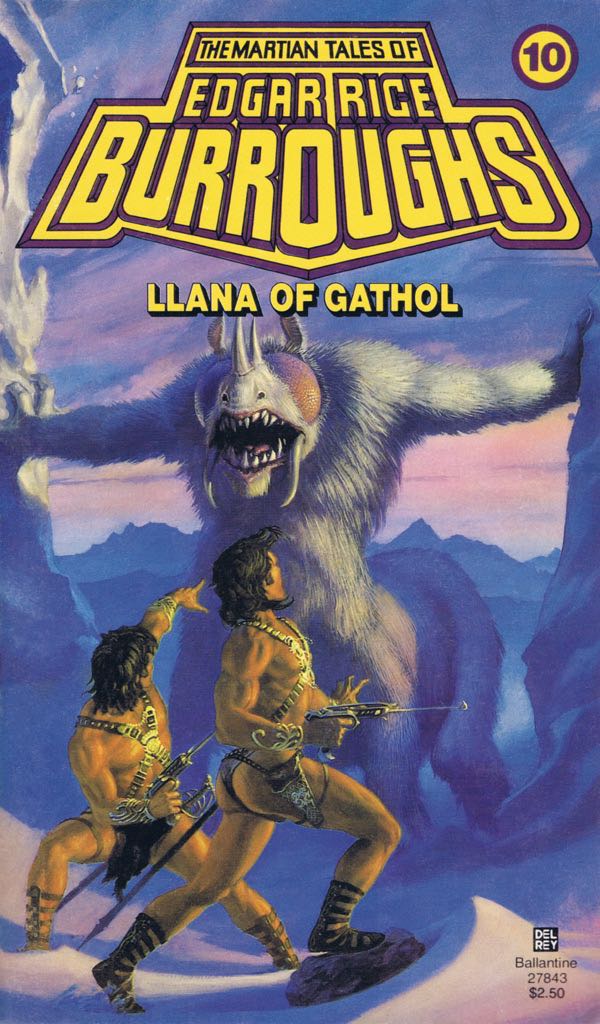Llana of Gathol
Series: Barsoom 10
Reviewed date: 2006 Oct 14
Rating: 3
191 pages
Llana of Gathol is the tenth book in the Martian tales of Edgar Rice Burroughs. It was originally published in 1941 as four novelettes.
John Carter, the Warlord of Mars, feels a need to get away from the stresses of ruling, so he takes a vacation alone. He is captured by the Orovars, who are a remnant of a long-dead Martian civilization. He makes a friend among the Orovars, and together they manage to escape from captivity--but not before rescuing princess Llana of Gathol (Carter's granddaughter) who was coincidentally also captured by the Orovars.
Carter escorts Llana back to her home city of Gathol, but on the way they are captured by the Black Pirates of Barsoom. Carter is sold into slavery, but Llana's destiny is to be the wife of Xaxak, the jeddak of the black pirates. Carter demonstrates his prowess with the sword, and he is sent to the gladiatorial arena to do battle with the champion swordsman of the black pirates. Carter dispatches their champion, rescues Llana, and they escape.
As Carter and Llana get near to Gathol, they are captured by the army of Hin Abtol, jeddak of the Panars. Carter is sold into slavery, but Llana is destined to be the wife of Hin Abtol. Carter demonstrates his prowess with the sword, and he is sent to the gladiatorial arena to do battle with the best swordsman of Panar. Carter dispatches their champion, rescues Llana, and they escape.
On their way back to Gathol, Carter and Llana are captured by the invisible men of Invak. Carter is held prisoner, while Llana is destined to become the wife of either the jeddak, Ptantus, or his son, Pnoxus. Carter demonstrates his fighting prowess, and he is sent to the gladiatorial arena to do battle with the best fighter among the invisible men. Carter dispatches their champion, rescues Llana, and they escape.
Some people say Edgar Rice Burroughs wrote Llana of Gathol as a satire or parody of his own writing. (That's the wrong use of the word satire, but most people don't know what satire is.) Certainly Burroughs was aware of his over-the-top formulaic writing. But other than the fact that Burroughs used the same plot three times in a row, there is little to suggest any conscious parody. From what little I know of the man's life, I think a better explanation is that Burroughs needed money, and dashed these stories off quickly as possible. Economic necessity, not conscious self-parody, explains the plot of Llana of Gathol.
Llana of Gathol is out of copyright in Australia but not the United States. You can read it online at Project Gutenberg of Australia.
